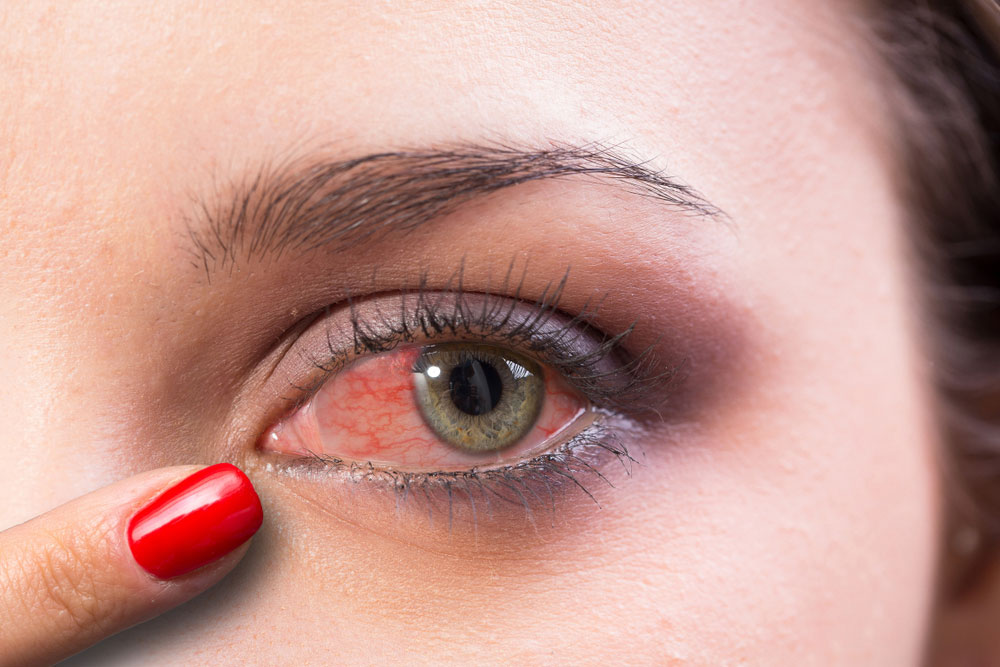Most of us experience dry eyes at one time or another, but for millions of people around the world this is a chronic condition known as dry eye syndrome (also referred to as DES or dry eye disease), the state of chronic insufficient moisture and lubrication on the eye’s surface.
Left untreated, dry eyes can cause inflammation and (sometimes permanent) damage to the eye’s surface. Dry eye syndrome affects up to 70% of people over the age of 50. It is also more common in women, particularly those who experience hormonal changes due to pregnancy, the use of birth control pills or menopause. It also can affect the outcomes of LASIK and cataract surgery.
Other terms used to describe DES include:
- Dysfunctional tear syndrome – emphasizes that poor quality of tears can be just as important as insufficient quantity of tears
- Keratitis sicca – used to describe inflammation and dryness of the cornea (the outer surface of the eye)
- Keratoconjunctivitis sicca – used when dry eye syndrome affects both the cornea and the conjunctiva
Symptoms of dry eyes or dry eye syndrome include:
- Aching sensations
- Blurred vision
- Burning sensation
- Discharge
- Dryness sensation
- Fatigued eyes
- Heavy eyes
- Itchy eyes
- Photophobia (light sensitivity)
- Red eyes
- Sensation of having something in your eye
- Sore eyes
As funny as it may seem, watery eyes also can be a symptom of dry eye syndrome. This is because dryness on the eye’s surface can sometimes over-stimulate the production of the watery component of tears as a protective action. This “automated tearing” does not remain on the eye long enough to solve the underlying dry eye condition.
Causes of dry eyes and dry eye syndrome
For your eyes to be healthy, comfortable and seeing well, their surface needs an adequate and consistent layer of tears. These tears keep the eye’s surface moist and wash away microorganisms, dirt and dust that could potentially damage the cornea and cause an eye infection.
A normal tear film consists of three important components:
- A mucous-like (mucin) component
- A watery (aqueous) component
- An oily (lipid) component
Each of the components play a critical role. For example, mucin spreads tears across the eye’s surface while lipids help slow the evaporation of the tear film and increase lubrication, while mucin helps anchor and spread the tears across the surface of the eye.
Each tear component is produced by different glands on or near the eye:
- Meibomian glands in the eye lids produce the oily component.
- Lacrimal glands found behind the outer aspect of the upper eyelids produce the watery component.
- Goblet cells in the conjunctiva that covers the white of the eye produce mucin.
Dry eyes can be caused by a problem with any of these sources of tear film components. The condition is classified into two basic types:
- Aqueous-deficient – due to decreased tear production
- Evaporative – due to increased evaporation
Your eye doctor will recommend treatment based on your specific type of symptoms.
Dry eye syndrome can also result from:
- Allergies
- Certain medications such as antihistamines, some blood pressure medication, hormone replacement therapy, and antidepressants
- Chronic conjunctivitis such as caused by tobacco smoke exposure or infection
- Heating / air conditioning
- Excessive time spent behind a screen
- LASIK surgery
- Low blink rate
- Pregnancy
- Vitamin A deficiency
- Wearing contact lenses
How to avoid and manage dry eye syndrome
- Add moisture to dry indoor air with a humidifier
- Eat a diet that is rich in vitamin A, found in apricots, broccoli, carrots, red capsicum, sweet potato, and kale
- Avoid air blowing in your eyes – think blow dryers, heaters, ACs, and fans
- Wear protective eyewear, such as sunglasses, outdoors. Wraparound sunglasses can block dry air and wind and dry air.
- Avoid extreme temperatures and environments where humidity is low
- Increase your intake of omega-3 fatty acids which can be found in foods such as walnuts, eggs, and fatty fish.
- Avoid smoking and second-hand smoke exposure
- Follow your eye doctor’s instructions if you wear contact lenses – avoid wearing them too long, clean them properly and replace them as directed by your doctor.
- Take breaks during long tasks. Close your eyes for a few minutes. Or blink repeatedly for a few seconds to help spread your tears over your eyes.
In severe cases, the use of preservative-free tear substitutes (eye drops) may be prescribed by your doctor.
If you frequently experience dry eye symptoms, it may be time to visit your ophthalmologist for a consultation, a slit-lamp examination, and possibly some other tests.

